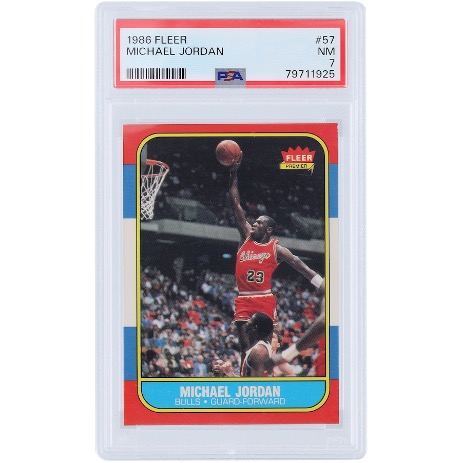Welcome to the enthralling world of sports card grading, a practice that has revolutionized the way collectors and investors approach their prized cards. In this article, we will delve into the intricacies of sports card grading, exploring its significance, the grading process, and its impact on the sports card collecting and investing hobby. We’ll also touch upon the three major grading companies — PSA, BGS, and SGC — that have become synonymous with card grading.
I. The Basics of Sports Card Grading
Before we dive into the specifics, let’s establish a fundamental understanding of sports card grading. A sports card is typically a collectible card featuring an athlete or a sports-related image. These cards can vary significantly in age, rarity, and condition. Sports card grading is the process of evaluating these cards for their condition and authenticity, often performed by professional grading companies.
Grading is crucial for collectors because it helps to determine the quality of a card, which in turn influences its market value. It’s akin to assigning a report card to a card, with grades ranging from “gem mint” to “poor.”
II. The Grading Scale
Grading companies use specific grading scales to rate cards. The most commonly used scale, a 10-point scale, starts at “Poor” or “Fair” and ascends to “Gem Mint” or “Pristine.” The condition of a card is meticulously assessed, with attention given to factors such as centering, corners, edges, and surface quality. Understanding the grading scale is essential for collectors to interpret a card’s grade correctly.
III. The Grading Process
1. Submission and Authentication: The grading process begins with choosing a reputable grading company. PSA, BGS, and SGC are the industry leaders known for their expertise and integrity. Collectors submit their cards to these companies, and authentication is the first step to ensure the card’s legitimacy.
2. Grading Standards and Criteria: Once authenticated, the card goes through a rigorous evaluation. Graders meticulously examine each card, assessing factors like the card’s centering (how well the image is centered on the card), corners (sharpness and condition of the corners), edges (smoothness and sharpness), and surface (free from defects like scratches or print imperfections). Each aspect contributes to the card’s final grade.
3. Grading Fees and Turnaround Times: Keep in mind that grading services come at a cost. Grading fees vary depending on the company and the card’s estimated value. Turnaround times can also vary significantly, ranging from several weeks to several months, depending on the grading company and the service level chosen.
IV. Impact of Grading on Card Value
Graded sports cards typically command higher prices in the market compared to their ungraded counterparts. This is because the grade assigned to a card provides a clear indication of its condition, which instills confidence in potential buyers. Collectors and investors often pay a premium for cards with higher grades, boosting their overall value. So, grading can significantly enhance a card’s marketability and value.
V. Investing in Graded Sports Cards
As the popularity of graded cards has surged, many collectors have turned to sports card investing. If you’re considering this path, here are some essential tips:
1. Research and Due Diligence: Study the market trends and the specific cards you’re interested in. Knowledge is power in the sports card market.
2. Market Trends and Demand: Be mindful of market dynamics. Some sports and players may be more in demand than others, affecting card prices.
3. Diversification: Don’t put all your eggs in one basket. Diversify your collection to spread risk.
VI. Notable Graded Card Sales
The world of graded sports cards has witnessed jaw-dropping sales. Some of the most coveted and valuable cards in history have changed hands for astonishing prices, setting records and capturing the imaginations of collectors and investors alike.
Sports card grading is a transformative practice that has redefined how collectors and investors perceive and interact with their cherished cards. Whether you’re a newcomer or a seasoned collector, understanding the grading process and its impact on card value can elevate your experience in the sports card collecting and investing hobby. As you navigate this exciting realm, keep in mind the role of trusted grading companies like PSA, BGS, and SGC, which stand as pillars of integrity in this captivating world of sports card grading.



